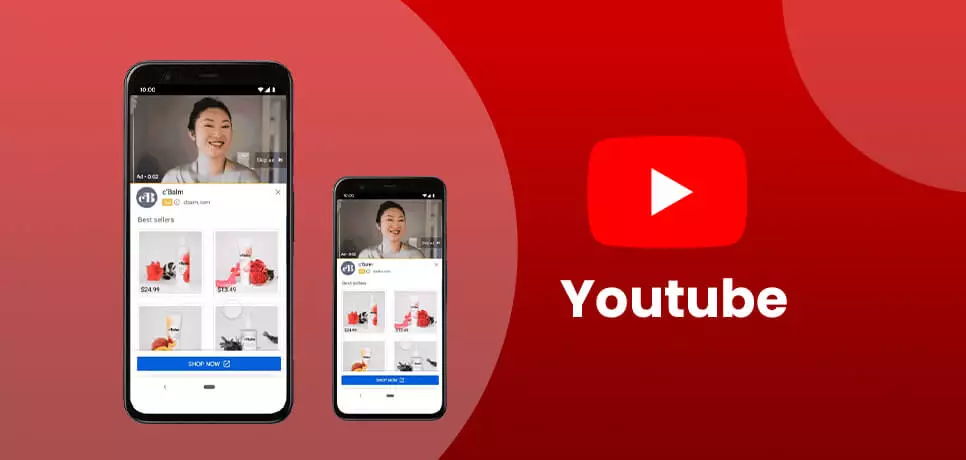YouTube isn’t just a video-sharing platform; it’s a cultural phenomenon that has transformed how we consume media. Launched in 2005, it has skyrocketed to become one of the most visited websites globally, with over 2 billion logged-in monthly users. From cat videos to DIY tutorials, YouTube offers an endless variety of content that attracts viewers from all walks of life.
One reason for its immense popularity is the *diversity of content* available. Want to learn how to cook? There’s a channel for that! Interested in gaming? YouTube has thousands of gamers sharing their strategies and experiences. This vast array of options keeps viewers engaged and coming back for more.
Moreover, the platform’s user-friendly interface and accessibility on multiple devices make it easy for anyone to upload videos, share experiences, and build a community. Creators can monetize their content through ads and sponsorships, turning a hobby into a viable career. This opportunity for content creators has led to the rise of influencers, who have substantial social media followings and can impact trends and consumer behavior.
In essence, YouTube's blend of entertainment, education, and community building has not only made it a powerful platform for individual creators but also a vital part of our daily lives. As we continue to navigate the digital landscape, understanding YouTube's role as a social media platform is crucial.
Defining Social Media: What Does It Mean?
Social media isn’t just about posting pictures or sharing videos; it’s a dynamic ecosystem of interactions that shapes our communication. At its core, social media refers to platforms that allow users to create, share, and exchange content. This definition extends beyond traditional social networks like Facebook and Twitter to include platforms like YouTube, Instagram, and TikTok.
So, what exactly defines social media? Here are a few key elements:
- User-Generated Content: At its heart, social media thrives on content created by users. Whether it’s a YouTube tutorial or an Instagram story, the content originates from the community.
- Interactivity: Unlike traditional media, social media facilitates two-way communication. Users can comment, like, and share, creating a dialogue around the content.
- Community Building: Social media platforms often foster niche communities. This can range from fans of a specific genre to professionals in a particular field, creating spaces for like-minded individuals to connect.
- Real-Time Sharing: One of the defining characteristics of social media is the ability to share updates and content in real-time, allowing for immediate feedback and engagement.
Understanding these elements helps us appreciate how platforms like YouTube fit into the broader social media landscape. While YouTube is primarily a video-sharing platform, it embodies all the characteristics of social media, making it a vital tool for communication, marketing, and community engagement. As we explore further, we'll see how
Also Read This: How to Upload to YouTube from iPhone: Complete Instructions
3. Characteristics That Make YouTube a Social Media Platform
YouTube isn’t just a place to watch cat videos or the latest music hits; it embodies several characteristics that qualify it as a social media platform. Let's dive into what makes YouTube tick in the social media arena!
- User-Generated Content: At its core, YouTube thrives on content created by users. Anyone can upload videos, share their stories, or showcase their talents. This democratization of content creation allows for a diverse range of voices and perspectives.
- Community Interaction: YouTube fosters a sense of community through comments, likes, and shares. Creators can engage with their audience by responding to comments, encouraging discussions, and even featuring viewer content in their videos.
- Channel Subscriptions: Users can subscribe to channels, allowing them to receive updates when new content is released. This creates a loyal following and a sense of belonging among viewers, akin to traditional social networking.
- Content Discovery: Algorithms suggest videos based on user behavior, making it easy for viewers to discover new content and creators. This feature enhances engagement and keeps the community dynamic.
- Live Streaming: YouTube offers live streaming capabilities, allowing creators to interact with their audience in real-time. This feature brings a level of immediacy and personal connection that is fundamental to social media.
- Collaborations: Many creators collaborate with others, blending audiences and ideas, further enhancing community ties. These collaborations often lead to exciting content, benefiting both creators and viewers.
These characteristics not only set YouTube apart as a social media platform but also contribute to its unique ecosystem. By blending entertainment with interactivity, YouTube creates an environment where users feel connected and engaged.
Also Read This: How Much Does YouTube Pay for 500K Views? Understanding Ad Revenue
4. Comparison of YouTube with Other Social Media Platforms
When we think of social media, platforms like Facebook, Instagram, and Twitter often come to mind. So, how does YouTube stack up against these giants? Let’s break it down!
| Platform | Content Type | Engagement Style | Audience Reach | Monetization |
|---|---|---|---|---|
| YouTube | Video | Comments, Likes, Shares, Subscriptions | Global Reach | Ad Revenue, Sponsorships, Merchandise |
| Text, Image, Video | Comments, Likes, Shares, Groups | Global Reach | Ad Revenue, Promotions | |
| Image, Video, Stories | Likes, Comments, Direct Messages | Global Reach, Mainly Youth | Ad Revenue, Sponsored Posts | |
| Text, Image, Video | Retweets, Likes, Replies | Global Reach | Ad Revenue, Promotions |
In this comparison, several key differences emerge:
- Content Type: YouTube is primarily focused on video content, while other platforms support various formats, including text and images.
- Engagement Style: YouTube emphasizes community interaction through subscriptions and comments, whereas platforms like Instagram focus more on visual engagement and direct messaging.
- Monetization: Although all platforms offer monetization options, YouTube's ad revenue model allows creators to earn substantial income compared to others.
In summary, while YouTube shares some characteristics with other social media platforms, its focus on video content and unique interactive features set it apart. This makes YouTube not just a video-sharing site but a vibrant social media community that connects millions of users worldwide.
Also Read This: Can You Pause and Rewind Live TV on YouTube TV? A Guide to Controlling Live TV on YouTube TV
5. The Role of User Interaction on YouTube
YouTube isn’t just a platform for watching videos; it’s a vibrant community where user interaction plays a crucial role in shaping content and influencing creators. Think about it: when you watch a video, you’re not just a passive observer. You can like, comment, and even share your thoughts with the world. This interaction fosters a sense of community that is unique to YouTube.
Engagement Metrics
Creators often rely on engagement metrics to guide their content strategy. Metrics such as:
- Likes: Show your appreciation for a video.
- Comments: Provide feedback or spark discussions.
- Shares: Help spread the content across social networks.
- Subscriptions: Indicate loyalty to a creator.
These interactions not only help creators understand their audience better but also influence YouTube’s algorithm, leading to increased visibility for videos that resonate well with viewers.
Building Relationships
When creators respond to comments, they’re not just addressing viewers; they’re building relationships. This connection is vital, as it encourages viewers to engage more, creating a feedback loop that enhances content quality. For example, if a creator asks for viewer opinions on future video topics and then follows through, it helps establish trust and loyalty.
Live Streaming and Real-Time Interaction
Live streaming is another powerful way user interaction shapes the YouTube experience. During a live stream, viewers can comment in real time, allowing creators to respond instantly. This creates a dynamic atmosphere where viewers feel like they are part of the action. For instance, during a gaming live stream, users can suggest strategies or ask questions, making the experience more interactive and enjoyable.
In essence, user interaction on YouTube transforms the platform from a mere video hosting site into a thriving social network. As viewers engage more, they contribute to a richer community experience, reinforcing the idea that YouTube is not just about content consumption but also about connection and collaboration.
Also Read This: Is YouTube a Good Career Choice? What You Need to Know Before Starting
6. Content Creation and Community Building on YouTube
Creating content for YouTube goes beyond just uploading videos; it’s about building a community. Successful creators understand that their audience is not just a collection of views but a group of individuals with shared interests and values.
Finding Your Niche
One of the first steps in content creation is identifying your niche. Whether it’s beauty tutorials, gaming, cooking, or educational content, finding a specific area allows creators to attract a targeted audience. For example, a channel focused on vegan cooking can not only share recipes but also connect with viewers on lifestyle choices, which fosters a sense of belonging.
Consistency is Key
Building a community requires consistency. Regular uploads help to keep viewers engaged and coming back for more. Creators who set a schedule—like “New videos every Wednesday”—help their audience know when to expect fresh content. This consistency builds anticipation and helps to forge a routine for viewers.
Encouraging Interaction Through Content
Creators can foster community by encouraging interaction within their videos. Asking questions, conducting polls, or prompting viewers to share their experiences in the comments can lead to richer discussions. For instance, a beauty vlogger might ask viewers for their favorite products and later feature those suggestions in future videos, making the audience feel valued.
Utilizing Social Media
Many creators extend their community-building efforts beyond YouTube by using other social media platforms. Engaging with followers on Instagram or Twitter helps maintain a connection and can drive traffic back to YouTube. Sharing behind-the-scenes content or personal stories on these platforms makes creators more relatable, strengthening the community bond.
In summary, content creation on YouTube is not just about the videos; it's about fostering a community where viewers feel connected and valued. By finding their niche, being consistent, encouraging interaction, and utilizing social media, creators can build a loyal following that enhances their YouTube journey.
Also Read This: How to Share a YouTube Video to Instagram and Boost Your Social Media Engagement
7. Monetization and Business Opportunities on YouTube
YouTube is not just a platform for sharing videos; it's a goldmine for monetization and business opportunities. Creators and brands alike can leverage this dynamic space to generate revenue and reach broader audiences. Let’s break down how this works.
Ad Revenue: One of the most common ways content creators earn money is through ad revenue. By joining the YouTube Partner Program, creators can monetize their videos once they meet the eligibility requirements, which include:
- 1,000 subscribers
- 4,000 watch hours in the past 12 months
- Adherence to YouTube's policies and guidelines
Once accepted, creators can enable ads on their videos, earning a share of the revenue generated from viewer clicks and impressions.
Brand Sponsorships: Another lucrative option is partnering with brands. Many companies are eager to collaborate with influencers who align with their target audience. For example, a beauty vlogger might partner with a cosmetics company to showcase their products in a tutorial, receiving payment or free products in return. This can be especially beneficial for niche creators with dedicated audiences.
Merchandise Sales: YouTube also allows creators to sell their merchandise directly through their channel. This can include anything from T-shirts to digital products. Platforms like Teespring and Merchbar integrate seamlessly with YouTube, making it easy for fans to purchase exclusive items while supporting their favorite creators.
Memberships and Exclusive Content: Creators can offer memberships through YouTube, allowing subscribers to pay a monthly fee for exclusive content, badges, and emojis. This not only generates steady income but also fosters a deeper connection between creators and their audience.
Course and Workshop Sales: Creators with expertise in specific areas can monetize their knowledge by offering online courses or workshops. For example, a fitness trainer might create a series of workout videos available for purchase, tapping into their audience’s desire for more personalized guidance.
The potential for monetization on YouTube is substantial, but it requires creativity, consistency, and engagement with the audience. By understanding these opportunities, creators can turn their passion into a sustainable business.
8. Conclusion: YouTube's Unique Position in the Social Media Landscape
As we wrap up our exploration of YouTube as a social media platform, it's clear that it occupies a unique and influential position in the digital landscape. Unlike other platforms that focus primarily on text or images, YouTube offers an immersive video experience that engages viewers on multiple levels.
YouTube combines entertainment with education, making it a versatile platform for both creators and consumers. Whether you’re looking to unwind with vlogs or learn something new through tutorials, YouTube caters to every interest. This versatility is a significant factor in its widespread appeal.
Moreover, the platform's algorithm is designed to promote content based on viewer preferences, allowing creators to reach audiences organically. This can lead to unforeseen viral moments that dramatically increase a channel’s visibility and subscriber count.
In terms of community, YouTube fosters a sense of belonging. Viewers can comment, share, and interact with creators, creating a vibrant ecosystem of feedback and support. This community aspect is crucial for building a loyal fan base.
Lastly, the monetization opportunities available on YouTube can turn hobbies into careers, making it an attractive option for aspiring creators. The blend of creativity, community, and commerce sets YouTube apart from other social media platforms, making it a powerful tool for personal expression and business growth.
As we look to the future, YouTube's ability to adapt and evolve will be key to maintaining its status as a leader in the social media landscape. Whether you’re a casual viewer or an aspiring creator, the possibilities on YouTube are vast, and it’s an exciting time to be part of this dynamic platform.

 admin
admin








